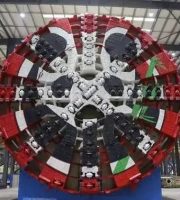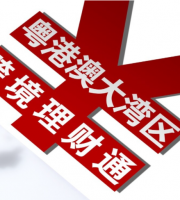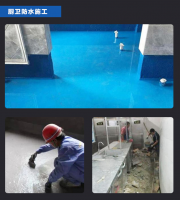1、 Safety management of work at height (1) during the installation and hoisting of steel structure, in addition to the general protective equipment for work at height, the operators shall take targeted safety protection measures for the construction of different steel structure components
.
1
.
Steel hanging ladder or ladder set on steel column can be used for steel column installation and climbing
.
The vertical ladder and other climbing tools required for steel column and beam construction shall be drawn on the component fabrication drawing with additional instructions
.
The operating platform used shall be provided with protective railings, and the height of railings shall not be less than 1200mm
.
2
.
When climbing to install the steel beam, depending on the height of the steel beam, the ladder or steel pipe scaffold can be set at both ends
.
When walking on the beam surface, the steel cable can be used for the cross bar of the beam surface guardrail
.
If the rope is used, the natural sag of the rope should not be greater than 1 / 20 of its length, and should be controlled within 10cm
.
The steel pipe fastener can also be used as the guardrail, but the lower end should take stable anchoring measures
.
3
.
When climbing on the upper and lower chords of steel roof truss, the triangular roof truss should be at the ridge of the roof, the trapezoidal roof truss should be at both ends, and the ladder used for climbing should be set
.
The material can be steel pipe, steel bar, bamboo or log
.
The step spacing should not be more than 30cm, and the diameter of bamboo should not be less than 70mm
.
Before the hoisting of the roof truss, the railings and cross bars should be set at the top chord in advance as protective facilities, and the safety net should be hung between the bottom chords of the left and right beams
.
After the hoisting, the safety net should be laid and fixed
.
(2) suspended operation 1
.
The high altitude operation without foothold or reliable foothold is called suspended operation
.
Therefore, it is necessary to establish a reliable foothold and provide protective fence net, railing or other safety facilities according to the specific situation when carrying out suspended work at height
.
The sling, scaffold, hanging plate, cage, platform and other equipment used in the suspended operation shall be purchased with qualified products that have been tested and identified
.
They shall be inspected and certified before being put into use, and shall be properly kept after use
.
Hanging operation is more common in the construction site, mainly including component hoisting, hanging reinforcement binding, concrete pouring and tamping, door and window installation and other operations
.
(3) component hoisting and pipeline installation ﹣ 1
.
Component hoisting ﹣ steel structure hoisting, the components shall be assembled on the ground as far as possible to avoid the operation in the suspended state as far as possible
.
At the same time, the safety protection facilities for temporary fixation, welding, high strength bolt connection and other processes shall be set up in advance, and the components shall be hoisted in place at the same time
.
The safety measures during disassembly should also be considered and implemented
.
Before the hoisting of prestressed reinforced concrete roof truss, truss and other large components, the safety facilities needed for suspended operation should also be set up
.
2
.
Pipeline installation: when installing the pipeline, the operating platform can be set as the foothold, and it is not allowed to stand and walk on the pipeline under installation, especially the horizontal pipeline
.
Although the surface looks flat, it does not have the ability to carry the weight of the construction personnel
.
If you do not pay attention to it, there will be danger, so you must not stand or rely on it, and it should be strictly prohibited
.
(4) steel bar binding: the operation platform and safety net shall be set up for steel bar binding and installation of steel bar framework
.
For the reinforcement binding of suspended girder, the construction personnel shall stand on the scaffold board or operation platform for operation
.
The steel bars for binding column or wall shall not stand or climb up and down on the steel framework
.
For binding the column reinforcement above 3M, it is also necessary to set up the operation platform around the column
.
The reinforcement less than 3m can be bound on the ground and then hoisted as a whole
.
(V) for concrete pouring and tamping, the operation platform shall be set up for the frame, lintel, canopy and small platform 2m above the ground
.
The operator shall not stand on the formwork or strut
.
The arch structure should be poured symmetrically from the ends of both sides of the structure
.
The lower opening of the pouring warehouse should be closed first, and then the scaffold should be set up to prevent personnel from falling
.
(6) during the operation of suspended doors and windows, installation of door and window frames, painting and installation of glass, the operator shall not stand on the frame or balcony fence
.
When the door and window are temporarily fixed and the sealing material has not reached its due strength, it is not allowed to climb by hand
.
In addition, when installing external doors and windows, the operator must first fasten the safety belt, hang the safety hook on the firm object above the operator, and assign special personnel to monitor, so as to prevent the hook from causing accidents
.
2、 Cross construction operation management (1) referring to the national regulations “the people’s Republic of China industry standard building construction safety technical code for work at heights” jgj80-91, cross operation has the following requirements: Article 5.2.1: when formwork, painting, wall building and other types of work are carried out up and down three-dimensional cross operation, they shall not operate in the same vertical direction
.
The working position of the lower layer must be outside the radius of the possible falling range determined according to the height of the upper layer
.
If the above conditions are not met, safety protection layer shall be set
.
Article 5.2.2 when removing steel formwork and scaffold, there shall be no other operators below
.
Article 5.2.3 after the removal of steel formwork components, the temporary stacking place shall not be less than 1m from the floor edge, and the stacking height shall not exceed 1m
.
It is strictly forbidden to stack any dismantled objects at the floor side entrance, passage entrance, scaffold edge, etc
.
Article 5.2.4 from the second floor, all passageways (including the passageways of derricks and construction elevators) for personnel entering and leaving shall be provided with safety protection shed
.
Double layer protection shall be provided for cross operation on the layer with height more than 24m
.
Article 5.2.5 due to the falling objects or the passage within the slewing range of the crane handle during the construction above, a double-layer protective gallery with the top to prevent penetration must be set up within the affected range
.
(2) other management requirements for cross operation (1) definition of cross operation (2) construction operation in progress that causes safety hazard to other operations or injury to other operators is called cross operation
.
2) management measures 1
.
For cross operation in the same operation area, a special person must be designated for unified coordination and command, and the safety production management agreement shall be signed to clarify the responsibilities, management scope and contents of both parties, and their respective safety management contacts
.
The coordination and cooperation work during construction shall be recorded in writing and signed by the responsible persons of both parties for filing
.
2
.
Strengthen the safety education of operators, improve their self-protection awareness, and achieve “four no harm”
.
3
.
The influence of cross operation must be considered in scaffold operation
.
The outer side shall be closed with dense mesh safety net, and the outer side shall be set with safety flat net every 10m to prevent objects from falling
.
It is forbidden to rest and stay under the protective railings, platforms and other components
.
The workers working at height must correctly use the safety belt and other labor protection appliances, and the tools for operation must be put in the tool bag; during the erection of scaffold or before the acceptance, non operators are forbidden to enter the construction area, and the warning line shall be drawn outside the scaffold when it is removed, and the person in charge of protection shall be designated
.
People are not allowed to enter the affected area
.
4
.
Before the hoisting operation, the personnel within the influence scope of hoisting shall be informed to evacuate, and safety protection measures shall be taken for special parts, and special personnel shall be designated to command and coordinate
.
5
.
There shall be no inflammable and explosive materials under and around the open fire operation, and the hot work permit shall be approved, fire safety measures shall be taken, and there shall be no personnel and inflammables in front of the grinding operation.
.



